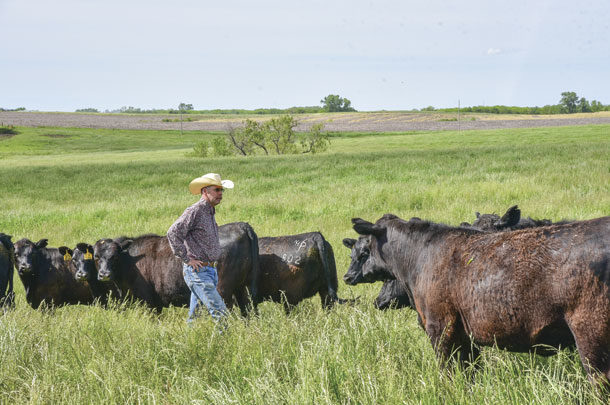If you raise cattle most of your life, you’ll have the opportunity to influence about 10 cattle generations. Thus, each generation and each mating should be viewed as a big responsibility. As a breeder, commit to identifying not simply the most popular bull but the best fit for your herd. To do so, you will need to sort through all the data to find the information you want.
There are countless pieces of data available to cattle breeders seeking to evaluate potential A.I. sires or herd bulls. While originally developed decades ago, expected progeny differences (EPDs) are considered the gold standard of tools available for genetic progress. Today, EPDs are available for performance, maternal and carcass traits. Indexes also exist for different situations, and these continue to evolve. (More on indexes another time.)
Even after seeing EPDs in bull sale catalogs and A.I. directories for years, making sense of it all can sometimes seem mind-boggling. Therefore, let’s take a step back and review the foundation.
Where are you now?
Where do you want to be?
What are you paid for?
Before making mating decisions, consider the current genetic makeup of your cow herd. Are your cows predominantly British-based, Continental-based or a blend of the two? For commercial herds, it makes sense (and cents) to utilize crossbreeding for the added benefit to lowly heritable traits, like reproductive traits. It also makes sense to select for highly heritable traits like growth and carcass traits using EPDs. For example, Angus-based commercial herds would mate well with a Simmental or Charolais bull that has top-percentile EPDs for growth, ribeye area and low fat thickness EPDs.
Also, consider the strengths and weaknesses of your cow herd. For instance, if your herd has a higher-than-desirable amount of thin or open cows, it may be beneficial to choose sires that are lower milk EPD and higher $EN (Angus cattle) or Stayability (Red Angus). Different areas of the country and different management levels require different levels of milk EPD, so it is important to select the optimal EPD level, not necessarily the highest. The use of high-accuracy A.I. sires is the best method for matching the needs of each female in the herd as well as the goals of your breeding program as a whole.
After considering the current genetics of your cow herd, think about your goals for future production. Do you wish to grow the herd by retaining home-raised heifers, or will most calves be sold to the feedlot?
If you intend to keep your heifers for replacements, then emphasis should be placed on bulls with high-ranking maternal EPDs like Calving Ease Maternal (CEM), Milk, Mature Weight (MW), Mature Height (MH) and other similar traits. EPDs are even (finally) available for foot and udder traits in some breeds.
By contrast, if you sell all calves to market, you should focus on A.I. bulls that are trait leaders for performance traits like Weaning Weight (WW). Both herds should keep Calving Ease Direct (CED) and Birth Weight (BW) at reasonable levels (many herds use breed average or better as a threshold); this helps keep calving difficulty to a minimum and maximizes the number of weaned calves. Ranches that retain ownership greatly benefit from selection for growth and carcass traits (YW, Marbling, REA, Carcass Weight).
In short, by using EPDs and selecting for practical and functional phenotype (structure, muscling, capacity, balance, etc.), you can be certain you are making the most informed decision possible. At Genex, this is called a combination of cow sense and science.
Understanding EPDs and accuracy
EPDs do exactly what their name implies: predict how a particular bull’s calves will compare to calves of the average bull of the same breed.
When making breeding decisions using EPDs, it is helpful to consider the accuracy values of those EPDs. Young sires with genomically enhanced EPDs usually have accuracy values in the .30 to .40 range, while mature bulls with recorded progeny data have much higher accuracy values. The closer the accuracy value is to 1, the window of change for each EPD becomes much smaller. Using high-accuracy A.I. sires chosen to complement the needs and goals of the ranch is undoubtedly the most economical and practical method to make multi-trait genetic progress in a commercial cow herd, regardless of the herd’s goals.
Build your team, build your knowledge
If, while reading this article, your mind drifted to thoughts of corn yields or those new Chevy commercials with the fancy tailgates, hang on for this one last point: If genetics isn’t your strong suit, build your team.
Don’t be afraid to seek assistance from an A.I. industry professional, breed association representative or your seedstock provider. Ask lots of questions of these people and use them as part of your network of trusted professionals.
Use all the tools available (information and people) to breed those 10 generations of better, more profitable cattle. ![]()
PHOTO: Genex delegate Phil Perry from Kansas looks over his bred heifers resulting from proven sires. Photo courtesy of Genex.

-
Brad Johnson
- Director of Beef Genetics
- Genex












